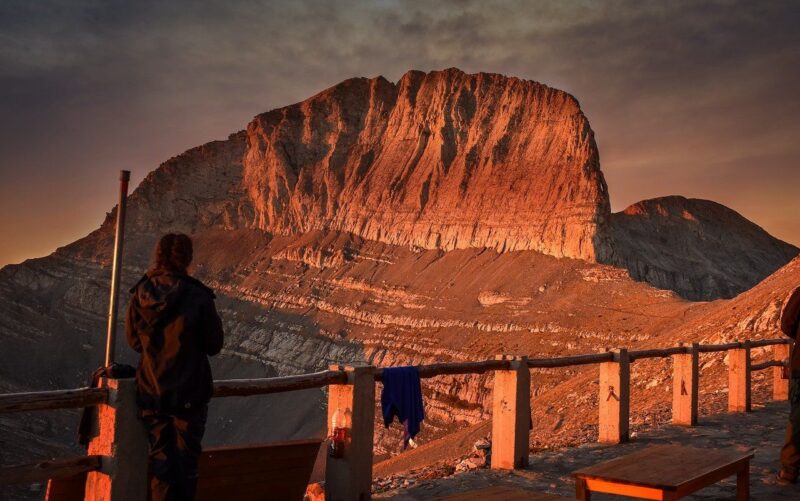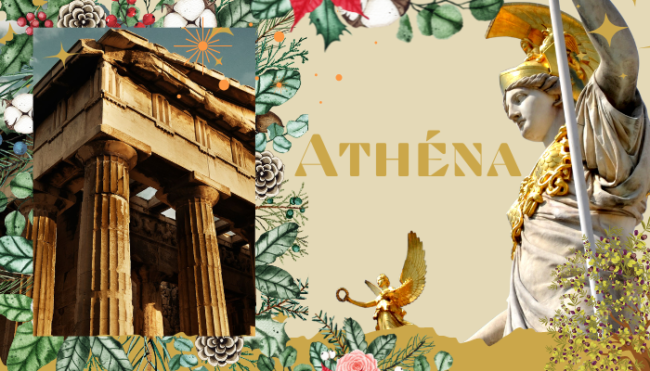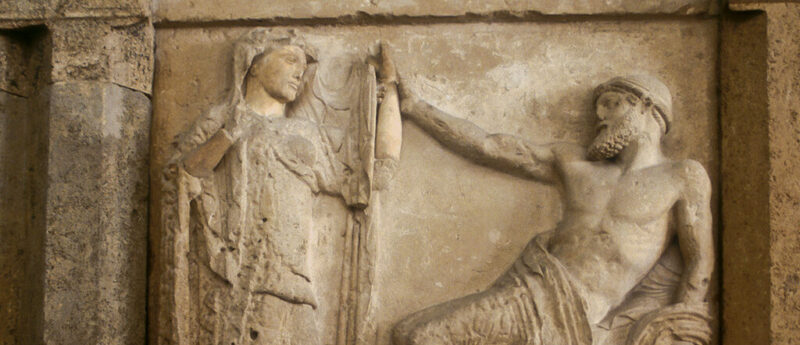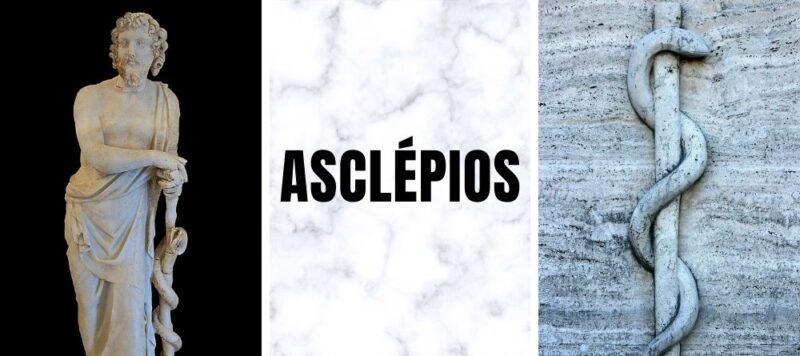In Greek mythology, Demeter (or Ceres in Roman mythology), goddess of agriculture, is also the goddess of cultivated land, fertile soil and harvests.
Who is Demeter, goddess of two faces?
The goddess Demeter is the daughter of Cronos and Rhea. In Greek mythology, she is presented as having two natures.
- On the one hand, she’s the divinity of the earth’s fertility, the one who offers above all wheat – man’s staple food.
- On the other, it is closely linked to the world of darkness and death, as the mysterious depths of the earth give life to plants.
Demeter’s great gifts to mankind
Since wheat was considered the goddess’ most important gift to mankind, it was only natural that they should credit Demeter with inventing agricultural tools and teaching them how to cultivate the land. It also introduced the cultivation of vegetables, particularly broad beans, and fruits such as figs. In Sicyone, the goddess was credited with inventing the mill, which she herself taught the inhabitants to use.
Demeter and her daughter Persephone (Coré)
Demeter, goddess of agriculture, is closely linked to her daughter Persephone, and the two form a couple often referred to simply as “the Goddesses”. The adventures of Demeter and Persephone constitute the central myth of their legend, the one whose deeper meaning was revealed by initiation into the Eleusis Mysteries.

The myth of Persephone’s abduction
It was Hesiod who first recounted the myth of the abduction of Persephone, Demeter’s beloved daughter, by Hades, the master of darkness. Persephone, daughter of Zeus and Demeter, was playing in a meadow with her friends. Just as the young girl was picking a Narcissus, the earth opened up and Hades dragged her into a realm of the Underworld. It’s THE myth that epitomizes the changing of the seasons.
Demeter in search of her daughter
Desperate, Demeter searched the earth for Persephone. For nine days and nights, without eating or drinking anything. What’s more, she was asking for information about her daughter’s disappearance. The goddess wandered the world, a lighted torch in each hand. Finally, Helios, the all-seeing sun, revealed what had happened.
Zeus provides the solution
During his daughter’s absence, the land was barren and the order of the world was turned upside down. Finally, Zeus ordered Hades to return Persephone. But in the meantime, the girl had eaten a pomegranate seed, definitively linking her to the world of darkness. A compromise had to be reached. Persephone would divide the year between the Underworld and her mother.
The compromise
This compromise between Demeter and the master of darkness enabled the ancients to explain the changing seasons on earth. Every spring, Persephone escapes from her subterranean abode and returns to earth to find her mother. She happily fills the earth with flowers and fruit. When winter arrives, Persephone once again flees among the shadows, at sowing time. Demeter, distressed, leaves the soil barren and it’s the sad season of winter.
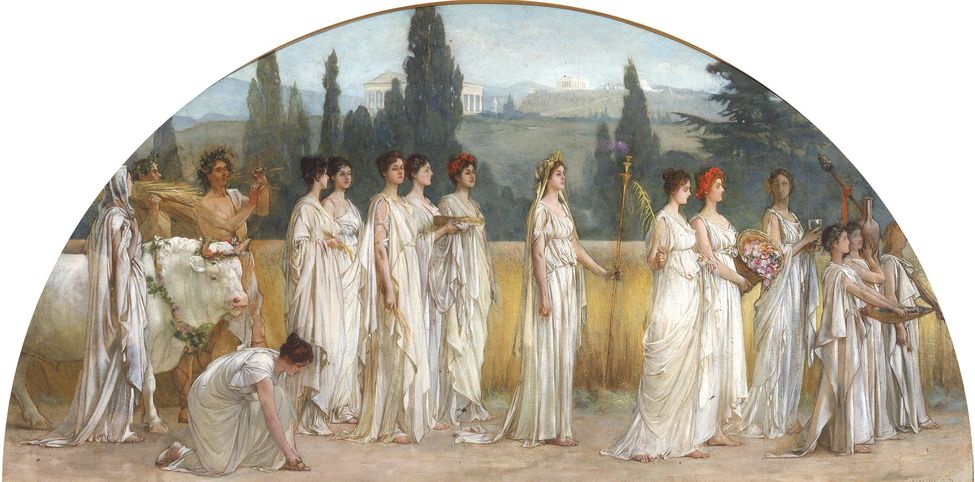
The cult of Demeter
In ancient times, the sanctuary of Demeter at Eleusis was one of the most important religious centers in the ancient world, as it was here that the Eleusinian Mysteries took place. Indeed, a solemn procession set off from Athens to Eleusis. During the Mysteries course, participants were introduced to the secrets hidden in the earth. This ritual is linked to the secret of the eternal succession of life and death in nature, similar to the changes in nature personalized in the myth of Persephone.
The great sanctuaries of Demeter
- Located some 20 km west of Athens, the archaeological site of Elefsina (Eleusis in Greek) was an important place of worship in ancient times . It was here that the famous Elefsina Mysteries were held, initiation festivals that attracted pilgrims from all over the Greek world.
- On the island of Naxos, Demeter is honored by a sanctuary built by the Greeks outside the village of Sangri. Around the sixth century BC, the temple of Demeter was built. They venerated, praised and exalted her for preserving the fertility of the land.
To learn more about mythology, here are a few articles:
